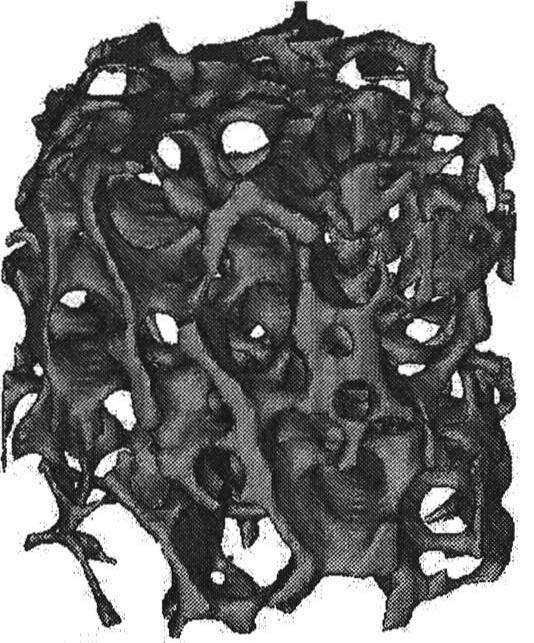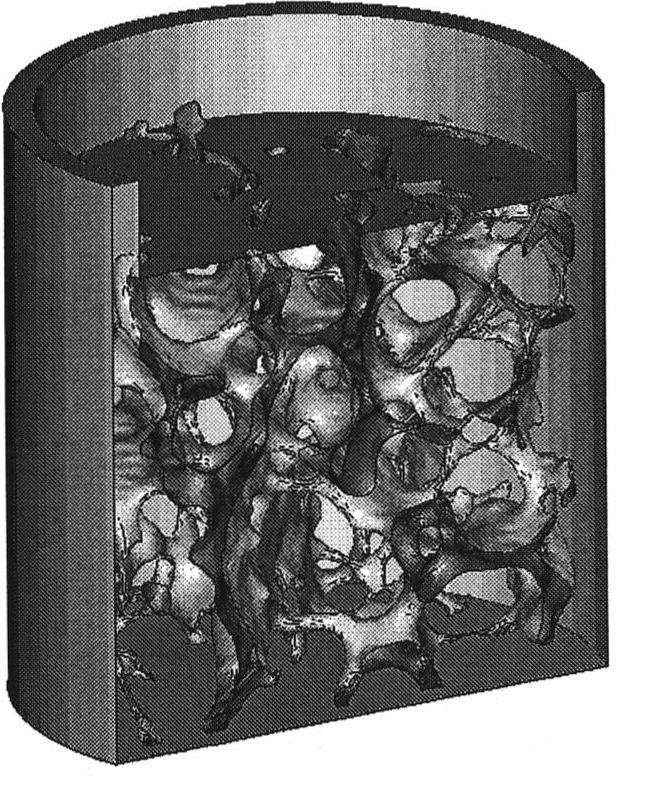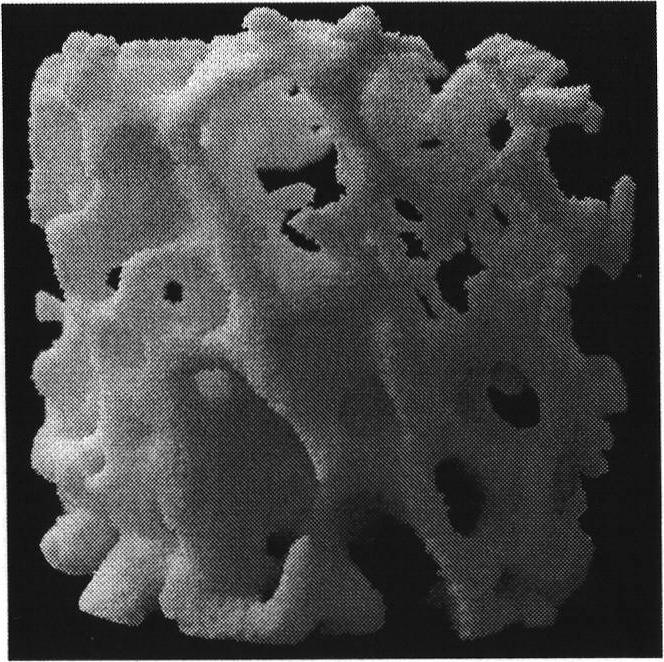Stereolithography-based process for manufacturing porous structure of bionic scaffold
A technology of porous structure and manufacturing process, applied in the field of artificial bone, can solve the problems of inability to guarantee the conduction of holes, bionic design and manufacturing, poor process controllability, etc., and achieves favorable adhesion, high precision, and biocompatibility. Good results
- Summary
- Abstract
- Description
- Claims
- Application Information
AI Technical Summary
Problems solved by technology
Method used
Image
Examples
Embodiment Construction
[0022] A preferred embodiment of the present invention is described in detail in conjunction with the accompanying drawings as follows: First, the manufacturing process of the biomimetic scaffold porous structure based on photocuring has the following steps: see figure 1 , using Micro-CT to scan natural bone to obtain tomographic images of microscopic three-dimensional porous structure information and three-dimensional spatial position density information of cancellous bone. Threshold processing is performed on each of the above-mentioned tomographic images to obtain a binarized image. After selecting the image range and calculation accuracy, and setting the parameter values of the generated 3D model, a porous structure bone model constructed from digital data can be obtained.
[0023] Later, see figure 2 , by removing microstructures smaller than 300 μm and processing with Boolean operations, a computer three-dimensional negative model is obtained.
[0024] Finally, see ...
PUM
 Login to View More
Login to View More Abstract
Description
Claims
Application Information
 Login to View More
Login to View More - R&D
- Intellectual Property
- Life Sciences
- Materials
- Tech Scout
- Unparalleled Data Quality
- Higher Quality Content
- 60% Fewer Hallucinations
Browse by: Latest US Patents, China's latest patents, Technical Efficacy Thesaurus, Application Domain, Technology Topic, Popular Technical Reports.
© 2025 PatSnap. All rights reserved.Legal|Privacy policy|Modern Slavery Act Transparency Statement|Sitemap|About US| Contact US: help@patsnap.com



